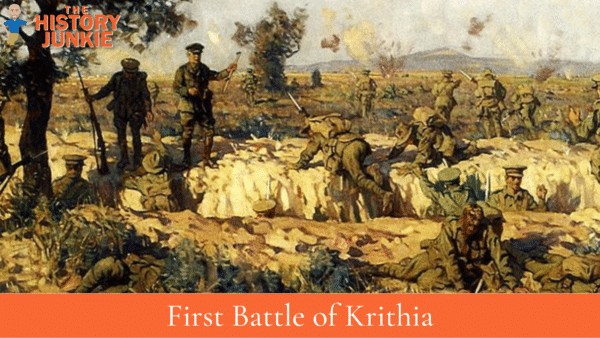On April 25, 1915, Allied forces landed on the Gallipoli Peninsula during the Gallipoli Campaign with the goal of capturing Constantinople and opening a supply route to Russia. This would have been a pivotal advantage during World War 1. This became known as the First Battle of Krithia.

Jump to:
The Battle
The landings were successful, but the Allies soon found themselves bogged down in a stalemate.
On April 28, Allied commander Sir Ian Hamilton ordered an attack on the Turkish-held village of Krithia. The attack was led by Aylmer Hunter-Weston, who had previously failed to press forward during the initial landings.
Hunter-Weston's force was outnumbered and outgunned, and the attack was quickly repulsed. Allied casualties were heavy, with approximately 3,000 losses from the original force of 14,000.
The failure of the First Battle of Krithia was a major setback for the Allied campaign. It showed that the Turks were determined to defend the peninsula, and it made it clear that capturing Constantinople would be a much more difficult task than originally thought.
Aftermath and Analysis
The First Battle of Krithia was a failure for a number of reasons.
First, Hunter-Weston's force was outnumbered and outgunned. The Turks had more men and more artillery, and they were well-entrenched in the village of Krithia.
Second, Hunter-Weston's plan of attack was flawed. He split his forces, which made it difficult for them to coordinate their efforts. He also failed to take advantage of the element of surprise.
Third, the Allies were not prepared for the level of Turkish resistance. They had underestimated the Turks' strength and determination.
The battle led to the removal of Hunter-Weston from command, and it contributed to the eventual failure of the Allied campaign in Gallipoli.
